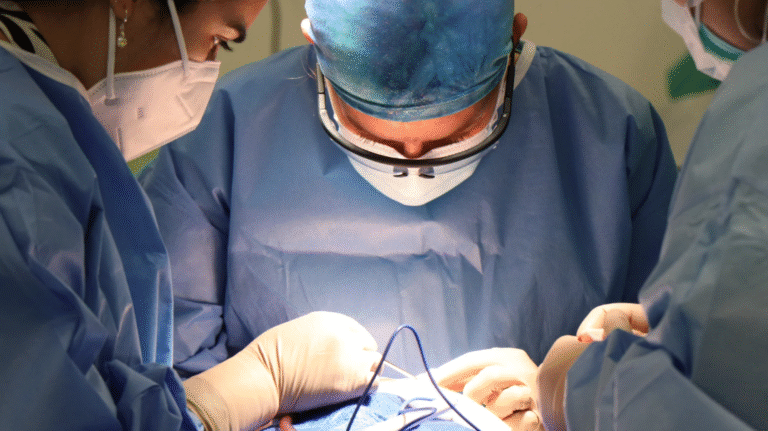Smile Makeovers: What to Expect from Start to Finish
Your smile is often the first thing people notice, but chips, gaps, discoloration, or misalignment can make you feel self-conscious. A smile makeover combines cosmetic dental treatments to transform your smile holistically. This guide covers the process, costs, and recovery, helping you decide if this life-changing treatment is right for you.
What is a Smile Makeover?
A smile makeover is a customized combination of cosmetic and restorative dental procedures designed to improve the appearance of your smile. Rather than focusing on just one dental issue, this comprehensive approach addresses multiple concerns simultaneously to create a harmonious, natural-looking result.
The process is highly personalized. Your dentist will evaluate your facial structure, skin tone, hair color, teeth, gum tissue, and lips to create a treatment plan that complements your unique features. Some makeovers might require just two or three procedures, while others may involve five or more different treatments.
The goal isn’t to create a “perfect” Hollywood smile that looks artificial. Instead, skilled cosmetic dentists aim for natural-looking results that enhance your existing features while addressing your specific concerns and goals.
Benefits of a Smile Makeover
The advantages of a smile makeover extend far beyond aesthetics. While the visual transformation is often dramatic, many patients find that the psychological and social benefits are equally significant.
Enhanced Confidence and Self-Esteem
When you’re proud of your smile, you naturally feel more confident in social and professional situations. Many patients report feeling more outgoing and willing to engage in conversations after their makeover. This increased confidence can positively impact your career prospects, relationships, and overall quality of life.
Improved Oral Health
Many smile makeover procedures don’t just improve appearance—they also enhance oral health. For example, straightening crooked teeth makes them easier to clean, reducing your risk of cavities and gum disease. Replacing missing teeth prevents remaining teeth from shifting and maintains proper jaw alignment.
Comprehensive Problem-Solving
Instead of addressing dental issues one at a time over several years, a smile makeover tackles multiple problems simultaneously. This approach is often more efficient and can be more cost-effective in the long run.
Long-Lasting Results
With proper care, most smile makeover treatments provide results that last for many years. Porcelain veneers, for instance, can last 10-15 years or longer, making the investment worthwhile for most patients.
Who is a Good Candidate?
Smile makeovers can address a wide range of dental concerns, making them suitable for many people. You might be a good candidate if you have one or more of the following issues:
- Stained or discolored teeth that don’t respond to whitening
- Chipped, cracked, or worn teeth
- Gaps between teeth
- Crooked or misaligned teeth
- Missing teeth
- Uneven or irregularly shaped teeth
- Gummy smile or excessive gum display
- Worn-down teeth from grinding or aging
However, good candidates should have healthy gums and adequate bone structure to support the planned treatments. If you have active gum disease or extensive tooth decay, these issues will need to be addressed before beginning cosmetic work.
Your lifestyle and commitment to oral hygiene also matter. Smile makeover treatments require ongoing maintenance and excellent oral care to ensure long-lasting results. If you’re not prepared to maintain good dental hygiene or attend regular check-ups, a makeover may not be the best investment.
Types of Procedures Involved
Smile makeovers typically combine several different procedures, each addressing specific concerns. Your dentist will recommend the treatments that best suit your needs and goals.
Teeth Whitening
Professional teeth whitening is often the foundation of a smile makeover. This treatment can dramatically brighten your smile and is usually one of the most cost-effective procedures included in the process.
Porcelain Veneers
Veneers are thin shells of porcelain that cover the front surface of teeth. They can address multiple issues simultaneously, including discoloration, chips, gaps, and minor misalignment. Veneers provide natural-looking results and are highly durable.
Dental Crowns
When teeth are severely damaged or have large fillings, crowns may be necessary. Modern crowns are made from materials that closely mimic natural tooth appearance while providing excellent strength and durability.
Orthodontic Treatment
For significantly crooked or misaligned teeth, orthodontic treatment might be included in your makeover plan. Options range from traditional braces to clear aligners like Invisalign.
Dental Implants
Missing teeth can be replaced with dental implants, which provide the most natural-looking and functional solution. Implants also help maintain facial structure and prevent bone loss in the jaw.
Gum Contouring
If you have a gummy smile or uneven gum line, gum contouring can reshape your gums to create better proportion and symmetry.
Sedation Options
Many patients feel anxious about extensive dental work. Fortunately, a sedation dentist, like those in Las Vegas, can offer various sedation options to keep you comfortable throughout the process. These range from nitrous oxide (laughing gas) for mild anxiety to IV sedation for more complex procedures or higher anxiety levels.
See also: 5 Benefits of Nanobubble Generators for Grass Health
What to Expect During the Process
Understanding the smile makeover process helps you prepare mentally and practically for the journey ahead.
Initial Consultation
Your first appointment involves a comprehensive examination and discussion of your goals. Your dentist will take photos, X-rays, and possibly impressions of your teeth. This information helps create a detailed treatment plan and timeline.
Treatment Planning
Based on your examination and goals, your dentist will develop a customized treatment plan. This plan outlines which procedures are needed, the sequence of treatments, estimated timeline, and costs involved.
Preparation Phase
Some procedures require preparation work. For example, if you’re getting veneers, your teeth will need to be slightly reshaped. If you have gum disease or cavities, these issues must be resolved first.
Treatment Phase
Depending on your plan, treatments may be completed in a few appointments or spread over several months. Some procedures, like orthodontics, require longer timelines, while others, like veneers, can be completed relatively quickly.
Follow-Up Care
After your treatments are complete, you’ll have follow-up appointments to ensure everything is healing properly and that you’re satisfied with the results.
Recovery and Aftercare
Recovery varies depending on which procedures are included in your makeover. Some treatments require minimal downtime, while others need more extensive healing periods.
Immediate Recovery
After procedures like veneer placement or crown installation, you might experience some sensitivity or minor discomfort for a few days. Over-the-counter pain medications are usually sufficient to manage any discomfort.
Long-Term Care
Maintaining your new smile requires excellent oral hygiene and regular dental visits. You’ll need to brush twice daily, floss regularly, and avoid habits that could damage your new work, such as chewing ice or opening packages with your teeth.
Lifestyle Adjustments
Some patients need to make minor lifestyle adjustments to protect their investment. This might include wearing a night guard if you grind your teeth, or being more mindful of foods and beverages that could stain your new teeth.
Cost of a Smile Makeover
Smile makeover costs vary significantly based on several factors:
- Number and type of procedures needed
- Geographic location
- Dentist’s experience and expertise
- Materials used
- Complexity of your case
Generally, smile makeovers can range from a few thousand dollars for simple cases to $30,000 or more for comprehensive transformations involving multiple complex procedures.
Many dental practices offer financing options to make treatment more affordable. Some procedures may be partially covered by dental insurance if they’re considered medically necessary rather than purely cosmetic.
Choosing the Right Dentist
Selecting the right dentist is crucial for achieving the results you want. Look for these qualifications:
Training and Experience
Choose a dentist with extensive training in cosmetic dentistry and experience performing smile makeovers. Ask to see before-and-after photos of previous patients with similar concerns to yours.
Technology and Materials
The best results come from dentists who use current technology and high-quality materials. Ask about the brands and types of materials they use for different procedures.
Communication Style
Your dentist should listen to your concerns, answer your questions thoroughly, and make you feel comfortable throughout the process. Good communication is essential for achieving results that meet your expectations.
Reviews and References
Read online reviews and ask for references from previous patients. A reputable dentist should be willing to provide testimonials from satisfied patients.
Conclusion
A smile makeover is more than a dental treatment—it’s an investment in your confidence and quality of life. Choosing an experienced cosmetic dentist is key to achieving natural, long-lasting results. Take time to research, ask questions, and feel confident in your choice. If you’re self-conscious about your teeth, a smile makeover could be the solution. Schedule a consultation to explore your options today.






